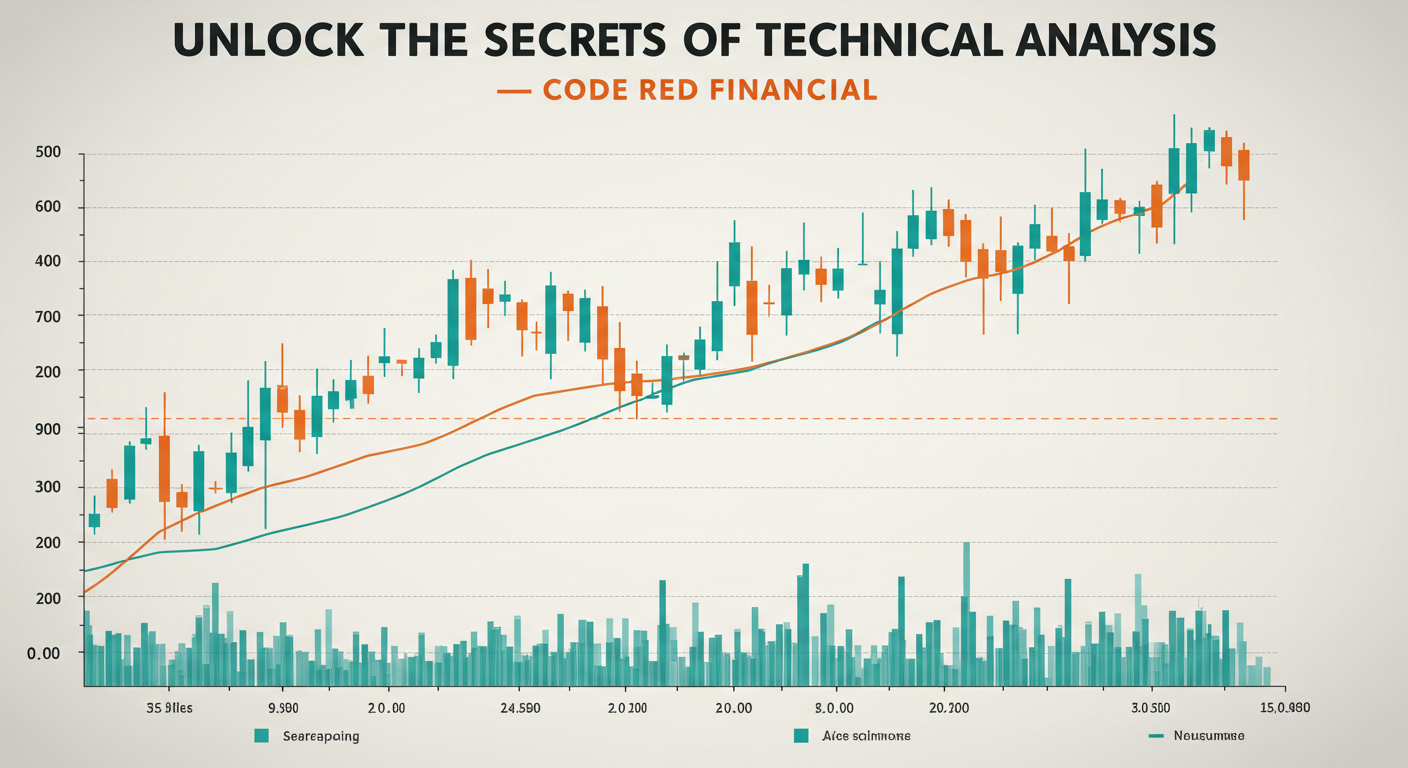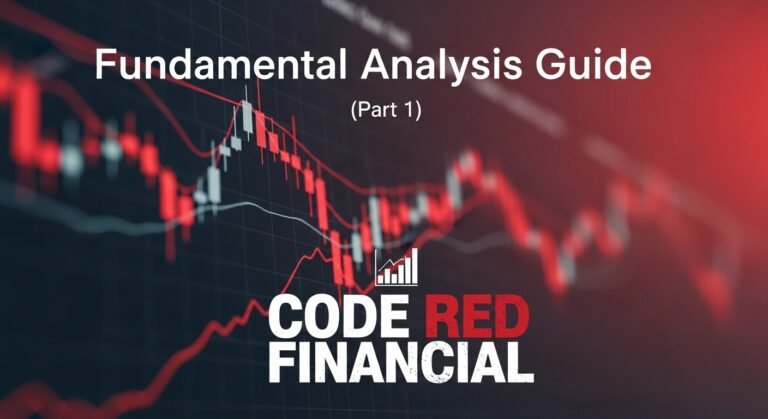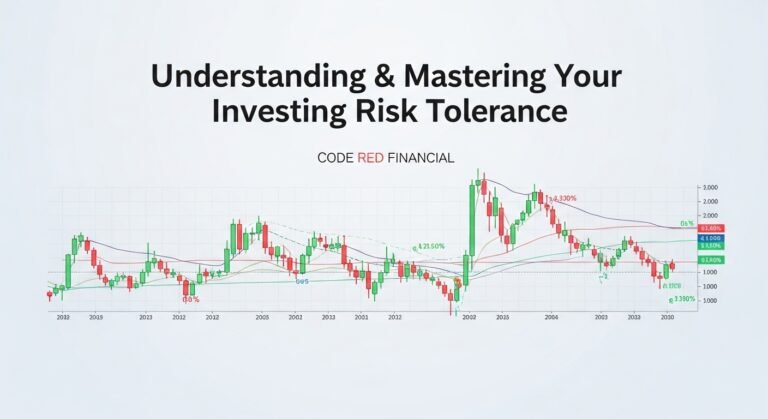
Technical Analysis: The Masterclass – Level Up Your Trading Game (Part 2)
Welcome back, aspiring market masters! In Part 1, we ignited your journey into technical analysis, revealing its core principles and essential steps. Now, it’s time to crank up the intensity. This isn’t just a guide; it’s your immersive masterclass, designed to transform you from a technical analysis novice to a confident, strategic market navigator. We’re diving deep, exploring advanced techniques, dissecting complex scenarios, and equipping you with the unshakeable skills to conquer the markets. Prepare to level up!
Recap & Rocket Fuel: Building on Your Foundation
Before we launch into advanced territory, let’s quickly recap the core pillars we established in Part 1. Remember, technical analysis is built on these explosive truths:
- Price Supremacy: Price action is the ultimate oracle, reflecting every market influence.
- Trend Tenacity: Trends are the unstoppable forces that dictate market direction.
- History’s Echoes: Market psychology creates repeating patterns that unlock predictive power.
Now, we’re not just acknowledging these truths – we’re going to weaponize them. Part 2 is about taking these core principles and forging them into advanced strategies and techniques that will set you apart from the trading masses.
Deep Dive: Mastering Advanced Technical Analysis Techniques
Get ready to immerse yourself in the advanced techniques that separate seasoned professionals from amateur dabblers. We’re going beyond the basics and into the inner sanctum of technical analysis mastery.
- Trend Analysis: Beyond the Basics – Trend Channels and Fan Lines We mastered trendlines in Part 1. Now, let’s elevate our trend analysis with trend channels and fan lines, powerful tools for precision and prediction.
- Trend Channels: Defining Price Corridors: Trend channels are formed by drawing parallel lines that encapsulate price action within a trend.
- Ascending Channel (Uptrend): Draw a trendline connecting higher lows (lower trendline) and a parallel line connecting higher highs (upper trendline). This channel defines the bullish corridor within which the price is likely to oscillate.
- Descending Channel (Downtrend): Draw a trendline connecting lower highs (upper trendline) and a parallel line connecting lower lows (lower trendline). This channel marks the bearish pathway of price movement.
- Trading with Channels: Channels provide high-probability trading zones. Buy near the lower channel line in uptrends and sell near the upper channel line in downtrends. Breakouts from channels can signal powerful trend accelerations or reversals.
- Fan Lines: Projecting Trend Strength and Reversals: Fan lines are used to gauge the strength of a trend and anticipate potential reversals, particularly after a steep price move.
- Drawing Fan Lines: After a trendline break, draw a new, steeper trendline from the same origin point to the next significant price extreme. Repeat this process.
- Fan Line Signals: Each subsequent fan line that price breaks through suggests weakening trend momentum. Breaking through the third fan line is often a strong signal of a potential trend reversal.
- Trend Channels: Defining Price Corridors: Trend channels are formed by drawing parallel lines that encapsulate price action within a trend.
- Support and Resistance: Dynamic Levels and Fibonacci Retracements We identified static support and resistance in Part 1. Now, let’s explore dynamic levels and Fibonacci retracements to pinpoint more nuanced and powerful zones.
- Dynamic Support and Resistance (Moving Averages): Moving averages aren’t just for trend identification; they act as dynamic support and resistance levels that adapt to changing price action.
- 20-day and 50-day MAs: Often act as dynamic support in short-term uptrends and dynamic resistance in short-term downtrends.
- 200-day MA: A critical long-term dynamic level, often separating bullish and bearish market regimes.
- Trading with Dynamic Levels: Look for price bounces off or rejections from moving averages as potential entry and exit signals, especially when they align with other technical indicators.
- Fibonacci Retracements: Unlocking Hidden Reversal Zones: Fibonacci retracements are based on the Fibonacci sequence and its ratios (23.6%, 38.2%, 50%, 61.8%, 78.6%). These ratios often act as hidden support and resistance levels during price retracements.
- Drawing Fibonacci Retracements: Identify a significant swing high and swing low. Charting platforms automatically calculate and plot Fibonacci retracement levels between these points.
- Trading Fibonacci Levels: Look for price reversals or consolidations at Fibonacci retracement levels, especially the 38.2%, 50%, and 61.8% levels, which are often considered key areas of potential support or resistance. Combine Fibonacci levels with other indicators for higher confirmation.
- Dynamic Support and Resistance (Moving Averages): Moving averages aren’t just for trend identification; they act as dynamic support and resistance levels that adapt to changing price action.
- Chart Patterns: Advanced Formations and Pattern Confluence We explored basic chart patterns in Part 1. Now, let’s delve into advanced formations and the power of pattern confluence for high-conviction trading signals.
- Advanced Chart Patterns:
- Cup and Handle: A bullish continuation pattern resembling a cup with a handle. The “cup” is a rounded bottom, and the “handle” is a short downward drift before a breakout.
- Inverse Head and Shoulders: A bullish reversal pattern, the mirror image of the Head and Shoulders pattern, signaling the end of a downtrend.
- Triple Top/Bottom: Stronger reversal patterns than double tops/bottoms, indicating multiple failed attempts to break through resistance (top) or support (bottom).
- Rectangle: A neutral pattern indicating consolidation, with price action bounded by horizontal support and resistance. Breakouts from rectangles can be explosive.
- Pattern Confluence: Stacking the Odds: The most powerful signals emerge when multiple chart patterns converge in the same area, reinforcing each other.
- Example: A bullish flag pattern forming right above a key Fibonacci retracement level, coinciding with dynamic support from a 50-day moving average. This confluence of patterns creates a high-probability zone for a bullish breakout.
- Advanced Chart Patterns:
- Technical Indicators: Divergence, Confirmation, and Indicator Combinations We introduced basic indicators in Part 1. Now, let’s master divergence, confirmation, and the synergistic power of indicator combinations.
- Divergence: Spotting Hidden Trend Weakness: Divergence occurs when an indicator and price action move in opposite directions, often signaling a potential trend reversal.
- Bullish Divergence: Price makes lower lows, but an oscillator (like RSI or MACD) makes higher lows. This suggests weakening selling pressure and potential bullish reversal.
- Bearish Divergence: Price makes higher highs, but an oscillator makes lower highs. This suggests weakening buying pressure and potential bearish reversal.
- Trading Divergence: Divergence is a leading indicator, providing early warning signals. However, it’s best used in conjunction with other confirmation signals, as divergence alone can sometimes be misleading.
- Indicator Confirmation: Strengthening Signals: Never rely on a single indicator in isolation. Confirm signals by using multiple indicators that corroborate each other.
- Example: A bullish chart pattern breakout confirmed by increasing volume, a bullish MACD crossover, and RSI moving out of oversold territory provides a much stronger buy signal than relying on just the chart pattern alone.
- Indicator Combinations: Creating Synergistic Systems: Certain indicator combinations work particularly well together, creating powerful and robust trading systems.
- Trend Following System: Combine moving averages (for trend direction) with MACD (for momentum) and volume indicators (for confirmation).
- Mean Reversion System: Combine oscillators like RSI and Stochastic (for overbought/oversold conditions) with Bollinger Bands (for volatility and potential price extremes).
- Divergence: Spotting Hidden Trend Weakness: Divergence occurs when an indicator and price action move in opposite directions, often signaling a potential trend reversal.
- Volume Analysis: Advanced Volume Signals and Volume-Price Action Harmony We touched upon basic volume confirmation in Part 1. Now, let’s explore advanced volume signals and the crucial harmony between volume and price action.
- Volume Spikes and Climaxes: Sudden surges in volume can signal significant market events.
- Buying Climax: A sharp price increase on extremely high volume, often followed by a reversal as buyers become exhausted.
- Selling Climax: A sharp price decrease on extremely high volume, often followed by a bounce as sellers become exhausted.
- Volume Spikes on Breakouts: Strong breakouts from chart patterns should be accompanied by significant volume spikes, confirming the validity and strength of the breakout.
- Volume-Price Action Harmony: Decoding Market Conviction: Analyze how volume behaves in relation to price movements to gauge market conviction.
- Healthy Uptrend: Rising prices accompanied by rising volume and pullbacks on low volume indicate a healthy and sustainable uptrend.
- Weak Uptrend: Rising prices on low volume and pullbacks on high volume suggest a weak and potentially unsustainable uptrend.
- Healthy Downtrend: Falling prices on rising volume and rallies on low volume indicate a healthy and sustainable downtrend.
- Weak Downtrend: Falling prices on low volume and rallies on high volume suggest a weak and potentially unsustainable downtrend.
- Volume Spikes and Climaxes: Sudden surges in volume can signal significant market events.
- Multi-Timeframe Analysis: Top-Down and Bottom-Up Approaches We introduced multi-timeframe analysis in Part 1. Now, let’s refine our approach with top-down and bottom-up methodologies for comprehensive market perspective.
- Top-Down Analysis (Macro to Micro): Start with longer timeframes (e.g., monthly, weekly) to identify the overarching trend and key support/resistance levels. Then, progressively zoom into shorter timeframes (e.g., daily, hourly) to refine entry and exit points within the context of the larger trend.
- Example: Identify a long-term bullish trend on the weekly chart, then use the daily chart to pinpoint specific entry signals within that uptrend, and finally use the hourly chart for precise timing.
- Bottom-Up Analysis (Micro to Macro): Start with shorter timeframes (e.g., 15-minute, hourly) to identify short-term patterns and momentum shifts. Then, zoom out to longer timeframes (e.g., daily, weekly) to confirm if these short-term signals align with the broader trend and larger market structure.
- Example: Spot a bullish breakout on an hourly chart, then confirm on the daily chart that this breakout aligns with a larger bullish trend and breaks through a key daily resistance level.
- Top-Down Analysis (Macro to Micro): Start with longer timeframes (e.g., monthly, weekly) to identify the overarching trend and key support/resistance levels. Then, progressively zoom into shorter timeframes (e.g., daily, hourly) to refine entry and exit points within the context of the larger trend.
- Developing Your Technical Trading Strategy: System Design and Backtesting Technical analysis is most powerful when integrated into a well-defined trading strategy. Let’s explore system design and backtesting to create robust and data-driven approaches.
- Strategy Framework: Define your trading strategy by specifying:
- Market and Instruments: Which markets (stocks, forex, crypto) and instruments (specific stocks, currency pairs) will you trade?
- Timeframe: Which timeframes will you primarily use for analysis and trading?
- Entry Rules: What specific technical signals (chart patterns, indicator combinations, volume signals) will trigger a trade entry?
- Exit Rules (Profit Targets and Stop-Losses): How will you determine when to take profits and cut losses? Will you use fixed targets, trailing stops, or dynamic levels based on technical analysis?
- Risk Management Rules: What percentage of your capital will you risk per trade? How will you manage overall portfolio risk?
- Backtesting: Validating Your Strategy’s Edge: Before risking real capital, rigorously backtest your trading strategy on historical data to assess its potential performance.
- Backtesting Platforms: Use trading software or dedicated backtesting platforms to simulate your strategy on historical price data.
- Performance Metrics: Analyze key metrics like win rate, average profit per trade, drawdown, and risk-adjusted returns to evaluate the strategy’s effectiveness and risk profile.
- Iterative Refinement: Backtesting is an iterative process. Analyze backtesting results to identify weaknesses in your strategy and refine your rules to improve performance.
- Strategy Framework: Define your trading strategy by specifying:
- Psychology and Discipline: The Unsung Heroes of Technical Trading Technical analysis provides the tools and techniques, but psychology and discipline are the ultimate determinants of your trading success.
- Emotional Mastery: Trading psychology is crucial. Learn to control fear and greed, avoid impulsive decisions, and stick to your trading plan even during market volatility.
- Disciplined Execution: Strictly adhere to your trading rules. Avoid deviating from your strategy based on emotions or hunches. Discipline is the bedrock of consistent profitability.
- Continuous Learning and Adaptation: The market is constantly evolving. Commit to continuous learning, stay updated on new technical analysis techniques, and adapt your strategies as market conditions change.
Advanced Tools and Resources
To truly excel in advanced technical analysis, expand your toolkit:
- Professional Charting Platforms: Explore advanced platforms like TradingView Premium, eSignal, or Bloomberg Terminal for in-depth analysis and data.
- Technical Analysis Software and Libraries: Utilize software like MetaStock or programming libraries (Python with libraries like
TA-Lib,pandas,matplotlib) for custom indicator development and automated analysis. - Advanced Educational Resources: Delve into books by renowned technical analysts like John Murphy, Martin Pring, and Jack Schwager. Explore advanced online courses and communities dedicated to technical trading.
The Path to Technical Mastery
This masterclass is your launchpad to technical analysis mastery. It’s a journey of continuous learning, rigorous practice, and unwavering discipline. By immersing yourself in these advanced techniques, honing your skills, and mastering your trading psychology, you can unlock the market’s hidden potential and elevate your trading game to elite levels.
Ready to embark on your path to technical mastery? Explore our website for even more advanced resources, in-depth tutorials, and a thriving community of traders to support your journey!
Disclaimer: This article is for informational purposes only and should not be considered financial or investment advice. Investing in any of the mentioned passive income streams involves risk, and you could lose money. Before making any investment decisions, it is essential to conduct your own thorough research and consider consulting with a qualified financial advisor who can assess your individual financial situation, risk tolerance, and goals. The potential returns discussed are illustrative and not guaranteed. Market conditions, regulations, and other factors can significantly impact the performance of any investment or business venture.





